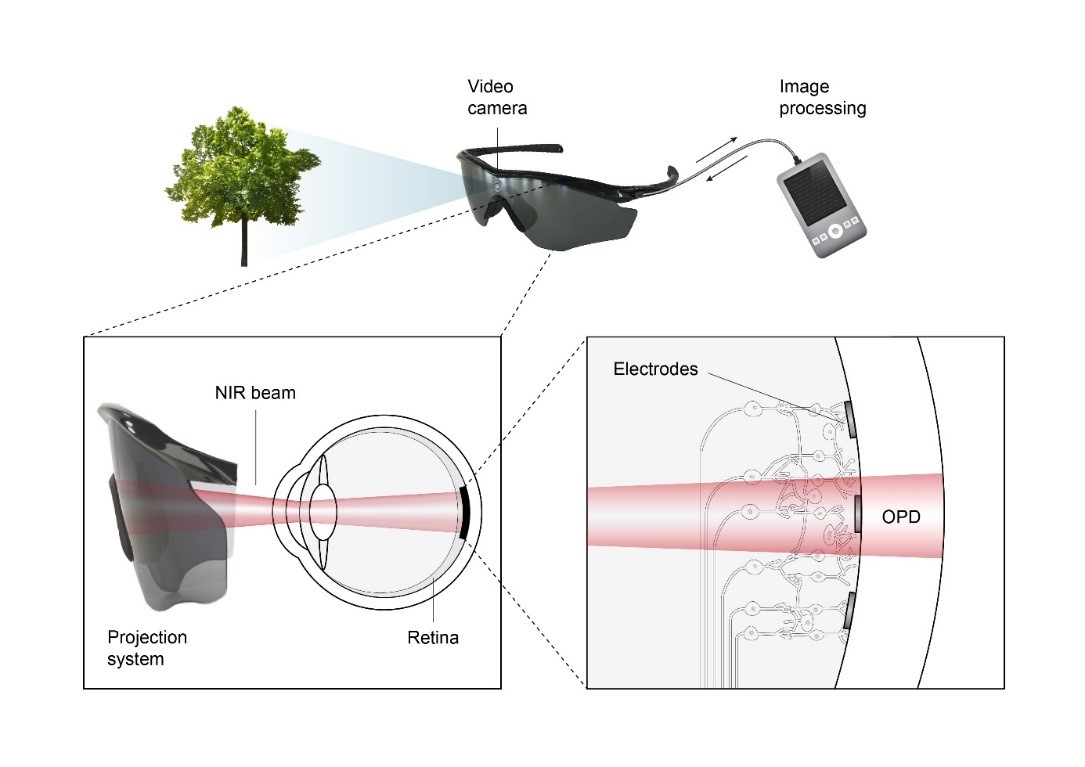Photodetectors at M2N
Organic semiconductors are very appealing for light detection applications. They combine effective light absorption in the green region of the spectrum with good photogeneration yield, sensitivity and response time. Since many organic materials can be dissolved in organic solvents, organic thin films can be easily formed using a solution or printing process without the need for vacuum equipment. This makes them specifically attractive for large area imagers. The low process temperature, typically less than 150°C, creates the possibility to use a wide range of plastic substrates instead of glass. Solution processed organic photodiodes can show D* detectivity values exceeding 1013 Jones, combined with large linear dynamic range of and short response time of 0.1 ns.
Within M2N we investigate several aspects of organic photodiodes in close collaboration with Holst Centre:
Dark current
The dark current of organic photodetector and is a limiting factor to the detectivity. Electrodes with tailored electron-blocking and hole-blocking layers are then typically used to lower the dark current. Although dark current densities can be low, with values down to 10-7 mA/cm2, in favorable cases, the origin of the dark current in OPDs is, however, still a matter of debate. There can be several contributions such as current leakage via small pinholes in the photoactive film, but also dark current injection at either one or both electrodes, or even thermal generation in the absorber material. We are developing new materials and device configurations, in combination with detailed experiments to unravel the origin of the dark current and reduce it to the intrinsic limits.
Artificial retina
Photovoltaic retinal prostheses show great potential to restore sight in patients suffering from degenerative eye diseases such as retinitis pigmentosa and age-related macular degeneration by electrical stimulation of the surviving neurons in the retinal network. At M2N we investigate organic photodiodes (OPDs) sensitive to near-infrared light as photovoltaic pixels for future application in retinal prostheses. We have recently shown that tandem OPDs can deliver the required charge to stimulate neurons under pulsed NIR light at physiologically safe intensities when connected to stimulating TiN micro-electrodes in a physiological saline solution. These tandem OPDs can cover the entire charge per pulse neural stimulation window due to their higher open-circuit voltage. This opens a way towards future development of high-resolution retinal prostheses based on flexible OPD arrays.

Concept of application of near-infrared organic photodiodes for artificial retinal implant.
Near-infrared photodetectors
Organic photodiodes that can detect near-infrared light are interesting for a range of applications as it enables night vision, health monitoring, optical communications and three-dimensional object recognition. Near-infrared photodetectors rely on low-band gap materials, but as a consequence low injection barriers and enhanced dark current generation in the bulk or at interfaces results in much higher dark currents. We investigate organic bulk-heterojunction layers aiming at near-infrared response up to 1500 nm, via developing new device architectures and new absorber materials.
Contact
Gerwin Gelinck
René Janssen
Stefan Meskers